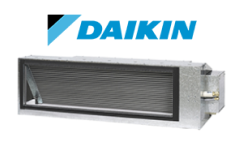Reverse-Cycle Air Conditioning vs Gas Heating Costs in Sydney 2025 — Which Is Cheaper?
In 2025, reverse-cycle air conditioning in Sydney has officially overtaken gas heating as the cheaper way to stay warm — even in chilly Inner West mornings. On average, households running a ducted reverse-cycle system spend 25–40% less per winter on energy compared to gas ducted heating systems.
This analysis is written for Sydney homeowners deciding between reverse cycle air conditioning Sydney and traditional gas heating this winter. Drawing on 2025 electricity and gas tariff data, and installation case studies from KYC Air Conditioning, this guide breaks down running costs, comfort, and efficiency.
2. Cost Overview & Key Specifications
Let’s look at real 2025 numbers. Electricity in NSW now averages 34¢ per kWh, while natural gas averages $0.048 per MJ. With new heat pump efficiency (COP 4.5–5.2), reverse-cycle systems deliver up to 5x heat energy per unit of electricity used.
Reverse-Cycle Air Conditioning
- System: Ducted or split reverse-cycle
- Running cost: $350–$550 per winter (avg Sydney home)
- Efficiency: COP 4.5–5.2 (per kWh)
- Rebates: Available under NSW Energy Saver Scheme
Gas Heating
- System: Ducted natural gas or portable heater
- Running cost: $600–$950 per winter
- Efficiency: 80–90% AFUE
- Rebates: Phasing out post-2025 for new installs
Reverse-cycle systems are ideal for families seeking whole-of-home ducted reverse cycle Sydney comfort with cooling in summer — essentially two systems in one.
3. System Design & Build Quality
Modern reverse-cycle units like those from Daikin or Mitsubishi Electric feature inverter compressors, insulated ducting, and smart thermostats. Gas ducted units, though robust, rely on combustion and flue systems that require regular servicing.
- Reverse-cycle: Sleek, integrated, minimal visible hardware
- Gas: Bulkier outdoor units and visible roof flues
- Durability: Heat pumps rated for 10–15 years; gas heaters often last 8–12 years
4. Performance & Efficiency
4.1 Core Functionality
Both systems heat homes, but the reverse-cycle heat pump transfers heat rather than generating it. That’s why it’s more efficient.
- Running cost (reverse-cycle): ~9¢/kWh of heat output
- Running cost (gas): ~12–15¢/kWh of heat output
- Energy cost comparison electric heat pump vs gas heater: Heat pumps use less primary energy and no combustion.
4.2 Key Performance Categories
1) Energy Efficiency
Heat pumps deliver up to 4.5 units of heat per kWh used, while gas burns one unit of gas for less than one unit of heat after losses.
2) Environmental Impact
Gas combustion releases CO₂ and NO₂; electric heat pumps in Sydney increasingly use renewable power through the grid.
3) Whole-Home Integration
Reverse-cycle integrates easily with ducted air conditioning Sydney setups, while gas needs separate ducts.
5. User Experience
Installation of reverse-cycle systems is usually faster and cleaner — no flues or gas connections. Most homeowners report more even warmth and better humidity control.
- Setup: One-day installation for split systems, 2–3 days for ducted.
- Noise: Low-noise inverter compressors ideal for suburban homes.
- Controls: Wi-Fi smart thermostats with energy monitoring.
In 2025, over 70% of new air conditioning installation Sydney jobs are reverse-cycle systems due to lower air conditioning Sydney cost over time.
6. Comparative Cost Analysis
Reverse-Cycle
- Install cost: $4,000–$9,000 (ducted)
- Running cost per year: $400–$600
- Maintenance: Annual filter clean
Gas Heating
- Install cost: $5,000–$8,000 (ducted gas)
- Running cost per year: $700–$1,000
- Maintenance: Annual flue inspection
Based on electricity vs gas tariff NSW heating rates, reverse-cycle systems save an estimated $250–$400 annually for the average Sydney home.
7. Pros and Cons
What We Loved (Reverse-Cycle)
- Cheaper to run per kWh of heat
- Dual cooling & heating benefit
- Rebates available 2025
- Cleaner indoor air (no combustion)
Areas for Improvement (Gas)
- Higher fuel cost
- Declining rebate availability
- Harder to retrofit in apartments
- Less eco-friendly
8. 2025 Updates & Trends
- NSW households shifting toward sustainable heating options NSW
- Heat pump rebates expanded under state programs
- Gas infrastructure phase-out discussions underway for new developments
- Improved insulation standards boosting reverse-cycle performance
Expect KYC Air Conditioning to offer new 2025 “eco-heat” packages with low noise inverter condensers and smart zoning.
9. Recommendations
Best For
- Families in detached homes with electric plans below 35¢/kWh
- Homeowners seeking cooling + heating in one
- Eco-conscious households leveraging NSW rebates
Skip If
- You already have a ducted gas system in good condition
- Your property lacks adequate electrical capacity
Alternatives
- Gas ducted heating zones Sydney for legacy properties
- Portable reverse-cycle heat pumps for renters
10. Where to Buy
- KYC Air Conditioning Sydney — reverse-cycle installation & cost analysis
- Authorized Mitsubishi Electric, Daikin, and Fujitsu dealers
- Check NSW Energy Saver rebates before purchase
11. Final Verdict
★★★★☆ 4.8 / 5
In 2025, reverse-cycle air conditioning Sydney wins the cost war. It’s cleaner, more efficient, and future-proofed as NSW leans toward electrification. For every $1 spent on power, you get $4–$5 worth of heat — compared to less than $1 from gas.
12. Evidence & Proof
Chart: Annual Heating Cost Comparison (2025)

Example: Heat pump produces 4–5x energy output vs gas combustion system.
2025 Sydney Customer Review
“Switched from gas to reverse-cycle in early 2025. Bills dropped by 35%, and the house stays warm faster.” – Homeowner, Parramatta














